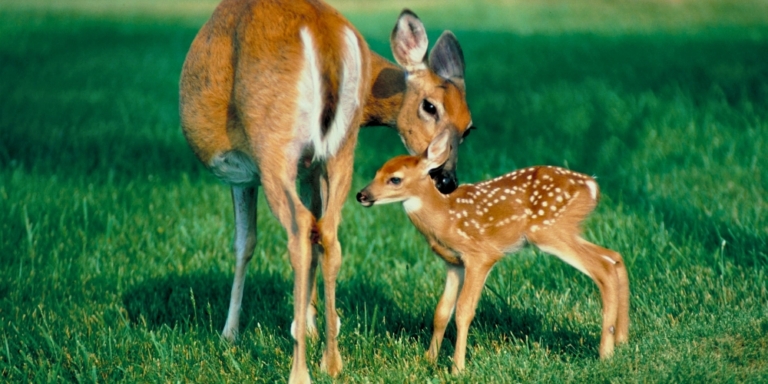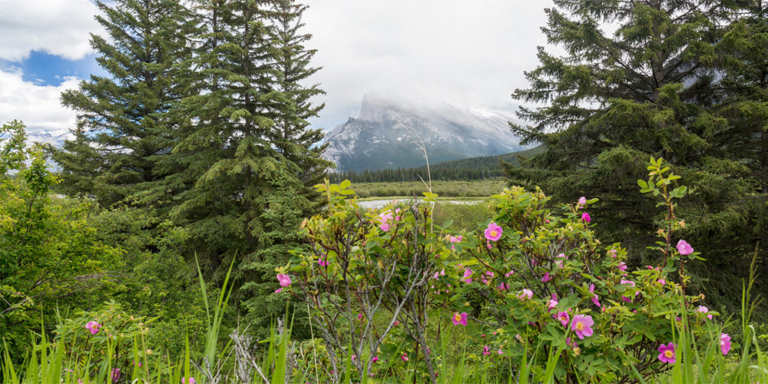Many people get trapped in careers that leave them feeling unfulfilled.
Just a lucky few find jobs that match their natural talents in life. But, when you answer your ‘calling,’ amazing things happen.
Hilo, a nine-year-old black labrador and golden retriever mix, has found his ‘calling.’


As a puppy, while being trained to be a guide dog, Hilo quickly learned that he wasn’t cut out for the job.
But that ‘failure’ didn’t stop the pup from finding his calling as a conservation K9. Now, Hilo leads with his nose, not his eyes, to sniff out invasive species alongside his handler, Cindy Sawchuk.
“A dog’s nose is actually the best chemical sensor the world has ever known. We as humans are looking with our eyes, and the dogs are completing the full picture by using their noses,” Sawchuk told the Rocky Mountain Outlook.
Labrador retrievers like Hilo have some of the best noses around. Hospitals commonly use this dog breed to help doctors identify patients with cancer.
Police and the military use Labrador retrievers to detect bombs and drugs.
Hilo is an expert when it comes to detecting invasive species.
Hilo and Sawchuk, who live together in Canmore, spend their days sniffing out boats and lakeshores for freshwater zebra and quagga mussels. These mussels are native to the Black Sea region of Eurasia but hitched a ride on transoceanic ships, eventually making their way to North America.


Zebra mussels were first discovered in the Great Lakes in 1986 in Lake St. Clair, and quagga mussels were first found in 1989 near Lake Erie. These invasive mussels are bad news for a few reasons. They filter plankton out of the water, which many native species rely on as a food source.
Zebra and quagga mussels can also clog water intake lines, causing millions of dollars in damage for cities and municipalities. The clogged lines result when massive colonies of mussels grow unchecked and block intake pipes.
In both species, a single female mussel can produce one million eggs annually, resulting in explosive population growth. An infestation of invasive mussels in our provincial waters could cost an estimated $75 million annually!
To make matters worse, getting rid of an infestation would be near impossible, so detecting mussels before they get in our waters is our first line of defence. Established in 2015, the K9 mussel detection unit is the first of its kind in Canada.
The mussel detection unit consists of Hilo and Sawchuk, K9 dog Seuss and handler Hannah McKenzie, and K9 dog Diesel with Heather McCubbin. The unit’s K9 dogs are trained to detect the smell of mussels and pinpoint their locations on boats at watercraft inspection stations on major highways leading to Alberta from eastern provinces and Montana.
At least 15 instances of invasive mussels have been found on boats this past boating season, and close to 200 since the unit was launched.
In an initial joint Montana-Alberta project to detect mussels, the K9 unit detected 100 percent of watercraft containing mussels.
In comparison, human inspectors only found 75 percent.
But Hilo and his fellow K9s aren’t working for a paycheque. Instead, the pups are rewarded with a special toy upon successfully detecting mussels. A successful detection is the only time they are allowed to play with the toy.
Sniffing out mussels on boats is just one task for the conservation K9 unit.


Most recently, Hilo and Sawchuk were tasked by Parks Canada to search Lake Minnewanka, Two Jack Lake, Moraine Lake, and Lake Louise for invasive mussels. The pair came up empty-handed, but their work is far from over.
Through Working Dogs for Conservation, a non-profit in the United States, dogs and handlers are trained to detect weeds before they surface, animals buried in the ground, diseases, and much more. In Alberta, the conservation K9 unit was expanded to detect invasive weeds and wild boar scat.
But the success of our conservation K9 unit isn’t due to a paycheque or fancy toy. What it comes down to is the bond between a handler and their dog. Just look at Hilo and Sawchuk! The pair have worked and lived together for seven years. They speak the same language through the relationship they share.
“We’re together all the time. These dogs live with us day in and day out. They’re integrated into our homes and our families and friends. That’s what builds trust so that if he’s trying to tell me something, then I can kind of understand his language because we live together,” explained Sawchuk.
Hilo may not be suited for a career as a guide dog for blind people, but his talent as a conservation K9 is undeniable.
With the help of Sawchuk, the pup has skillfully carried out conservation work, something fewer than 1,000 dogs are suited for, but being a conservation K9 is Hilo’s calling!






